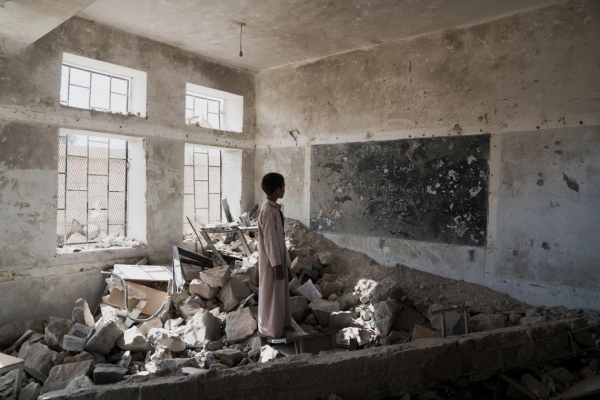In February 2020, Save the Children issued its third report entitled “Stop the War on Children”, which shows the worrying increase of grave violations perpetrated on children living in conflict areas. Nowadays, 415 million children live in such areas, with 149 million out of them living in high-intensity conflict zones making more than 1,000 victims yearly. Despite the number of children living in conflict in 2018 has decreased from an all-time high in 2017, the number of verified violations increased yet again.
The largest concentration of children living in conflict areas is the African continent, which counts 170 million of them, while the Middle East has the largest share with one out of three children living in conflict zones. Moreover, despite engaging in multiple activities in humanitarian response design as well as building and sustaining peace, it is undeniable that children’s needs in conflict zones are not sufficiently taken into account.
The report highlights how girls and boys are impacted by conflict differently. While sexual and other forms of gender-based violence (SGBV), such as forced marriage, is the main risk for girls, boys are more exposed to killing and maiming, abductions and recruitment. In addition, most violations are often “invisible”, especially for girls experiencing sexual violence and for children of diverse gender identities. In addition, it has been hard to monitor, report and verify violations, which proves that the true scale of violations affecting children is under-reported. Indeed, reporting mechanisms, which are currently disaggregated at all, still rely on binary data representations of gender. Consequently, the experiences of children of all genders, as well as the full impact of violations against them, are mostly unknown.
A number of recommendations to alleviate the burden of conflict on children are also drawn in the final part of the report. In accordance with the 2019 report, Save the Children firmly believes that states can effectively stop the war on children by taking action in three main areas, including upholding international norms and standards, holding perpetrators’ accountability for violations against children, and enabling children to recover from conflict, while taking practical action to protect them from harm.
In conclusion, in spite gradual progress was made with reference to the three pillars’, Save for Children calls on States to abide by their obligations under humanitarian law and international human rights law; it also calls on the United Nations Security Council members and humanitarian actors to implement a holistic approach to addressing SGBV in conflict-affected settings. The Organization also urges donors and humanitarian actors to increase multi-year investment in humanitarian child protection (growing from 0.5% to 4% of the total humanitarian funding). While calling on humanitarian actors to support children to raise complaints of violations of their rights in conflict directly, Save the Children finally urges all the relevant actors to ensure meaningful children’s participation in humanitarian response, in addition to collecting, analysing, and using data to recognize the direct impact on design and delivery of programmes and advocacy for children in conflict.
To know more, please read:
https://resourcecentre.savethechildren.net/node/16784/pdf/ch1413553.pdf
Author: Barbara Caltabiano; Editor: Gianmarco Italia]




